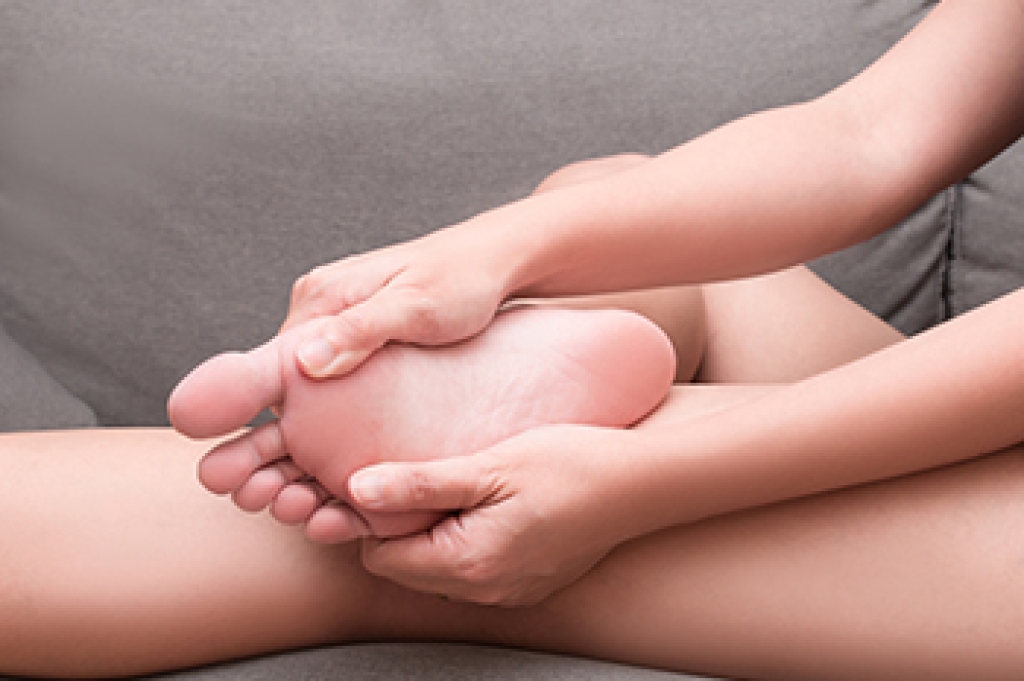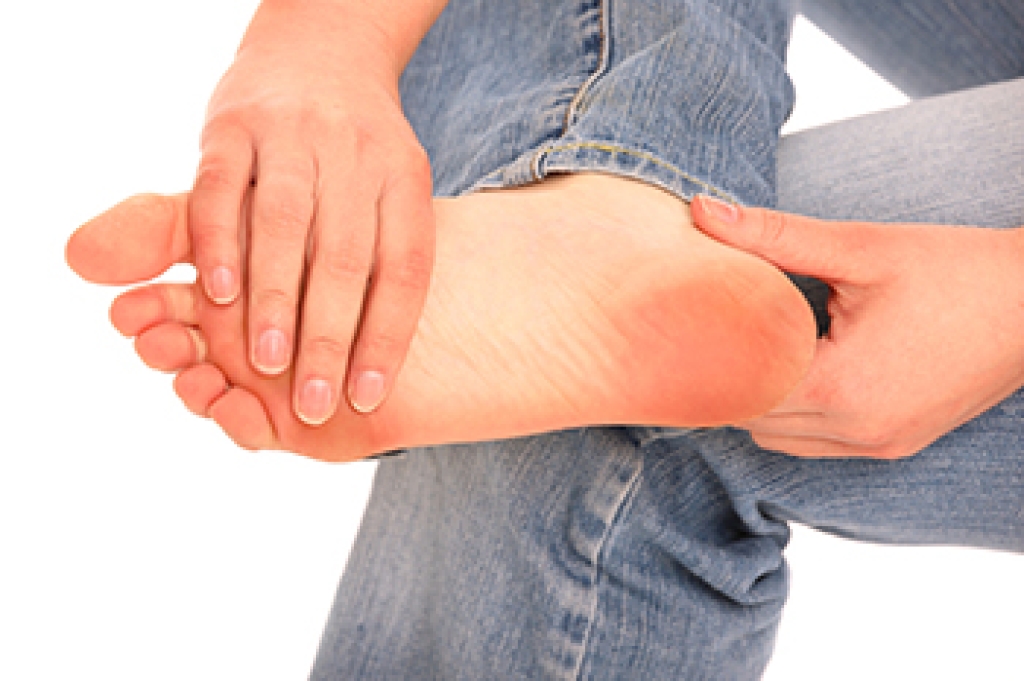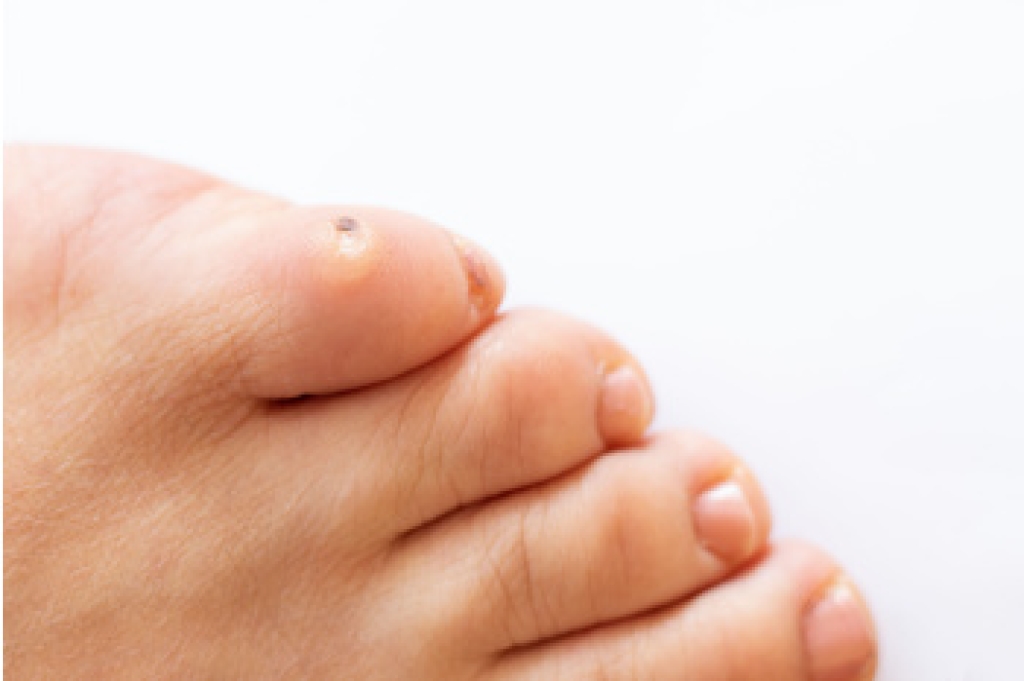Connect With Us
Blog
Blog
Ball of the Foot Pain Could Be Sesamoiditis

Sesamoiditis is a painful condition that affects the ball of the foot, specifically around the big toe joint, where two small bones called sesamoids are located. These bones act like pulleys to help the tendons move smoothly, but they can become irritated or inflamed due to overuse, repetitive pressure, or high-impact activities like running or dancing. Symptoms include a dull or sharp pain beneath the big toe, swelling, bruising, and difficulty bending or bearing weight on the toe. The area may feel tender to the touch and may worsen with certain shoes or prolonged activity. A podiatrist can diagnose sesamoiditis through a physical exam and imaging, such as X-rays or an MRI scans to rule out fractures. Treatment often includes custom orthotics, padding, anti-inflammatory medications, and footwear changes. In more severe cases, immobilization or injections may be necessary. It is suggested that you schedule an appointment with a podiatrist to address persistent foot pain.
Sesamoiditis is an unpleasant foot condition characterized by pain in the balls of the feet. If you think you’re struggling with sesamoiditis, contact Leonard Talarico, DPM of Georgia. Our doctor will treat your condition thoroughly and effectively.
Sesamoiditis
Sesamoiditis is a condition of the foot that affects the ball of the foot. It is more common in younger people than it is in older people. It can also occur with people who have begun a new exercise program, since their bodies are adjusting to the new physical regimen. Pain may also be caused by the inflammation of tendons surrounding the bones. It is important to seek treatment in its early stages because if you ignore the pain, this condition can lead to more serious problems such as severe irritation and bone fractures.
Causes of Sesamoiditis
- Sudden increase in activity
- Increase in physically strenuous movement without a proper warm up or build up
- Foot structure: those who have smaller, bonier feet or those with a high arch may be more susceptible
Treatment for sesamoiditis is non-invasive and simple. Doctors may recommend a strict rest period where the patient forgoes most physical activity. This will help give the patient time to heal their feet through limited activity. For serious cases, it is best to speak with your doctor to determine a treatment option that will help your specific needs.
If you have any questions, please feel free to contact our office located in Pooler, GA . We offer the newest diagnostic and treatment technologies for all your foot care needs.
Lower Extremity Injuries Among Tennis Players

Tennis demands quick direction changes, sudden stops, and powerful bursts of speed. All of these things place heavy stress on the legs and feet. Common lower extremity injuries include ankle sprains, Achilles tendon strain, plantar fasciitis, and stress fractures in the foot or shin. Overuse, wearing poor footwear, or inadequate warm-up routines can increase the likelihood of these conditions. Symptoms such as pain, swelling, or instability should never be ignored, as continuing to play can worsen the damage. Early evaluation by a podiatrist helps determine the exact cause and create a recovery plan tailored to each athlete. Treatment often combines rest, targeted exercises, and supportive orthotics to restore stability and prevent re-injury. Proper conditioning, stretching, and wearing well-fitted tennis shoes can go a long way toward keeping players healthy and on the court. If you enjoy playing tennis and have sustained a foot or ankle injury, it is suggested that you see a podiatrist for an evaluation and appropriate treatment.
Ankle and foot injuries are common among athletes and in many sports. They can be caused by several problems and may be potentially serious. If you are feeling pain or think you were injured in a sporting event or when exercising, consult with Leonard Talarico, DPM from Georgia. Our doctor will assess your condition and provide you with quality foot and ankle treatment.
Common Injuries
The most common injuries that occur in sporting activities include:
- Achilles Tendonitis
- Achilles Tendon Rupture
- Ankle Sprains
- Broken Foot
- Plantar Fasciitis
- Stress Fractures
- Turf Toe
Symptoms
Symptoms vary depending upon the injury and in some cases, there may be no symptoms at all. However, in most cases, some form of symptom is experienced. Pain, aching, burning, bruising, tenderness, tightness or stiffness, sensation loss, difficulty moving, and swelling are the most common symptoms.
Treatment
Just as symptoms vary depending upon the injury, so do treatment options. A common treatment method is known as the RICE method. This method involves rest, applying ice, compression and elevating the afflicted foot or ankle. If the injury appears to be more serious, surgery might be required, such as arthroscopic or reconstructive surgery. Lastly, rehabilitation or therapy might be needed to gain full functionality in the afflicted area. Any discomfort experienced by an athlete must be evaluated by a licensed, reputable medical professional.
If you have any questions please contact our office located in Pooler, GA . We offer the newest diagnostic and treatment technologies for all your foot and ankle needs.
Reasons the Ball of Your Foot Hurts

Pain in the ball of the foot, often called metatarsalgia, can develop from a range of conditions that place strain on the forefoot. The most common causes are bunions, which shift the alignment of the big toe and change how weight is distributed, and Morton’s neuroma, where tissue thickens around a nerve between the toes and produces burning or tingling sensations. Injuries such as sprains or more severe Lisfranc injuries involving torn ligaments or broken bones in the midfoot can also lead to significant discomfort in the ball of the foot. Some patients may notice numbness or sharp pain that spreads into the toes. A podiatrist can assess the source of the pain with a physical exam and imaging, provide proper treatment, and in advanced cases recommend surgery to restore stability and function. If you have pain in the ball of the foot, it is suggested that you make an appointment with a podiatrist for an exam and treatment.
Foot Pain
Foot pain can be extremely painful and debilitating. If you have a foot pain, consult with Leonard Talarico, DPM from Georgia. Our doctor will assess your condition and provide you with quality foot and ankle treatment.
Causes
Foot pain is a very broad condition that could be caused by one or more ailments. The most common include:
- Bunions
- Hammertoes
- Plantar Fasciitis
- Bone Spurs
- Corns
- Tarsal Tunnel Syndrome
- Ingrown Toenails
- Arthritis (such as Gout, Rheumatoid, and Osteoarthritis)
- Flat Feet
- Injury (from stress fractures, broken toe, foot, ankle, Achilles tendon ruptures, and sprains)
- And more
Diagnosis
To figure out the cause of foot pain, podiatrists utilize several different methods. This can range from simple visual inspections and sensation tests to X-rays and MRI scans. Prior medical history, family medical history, and any recent physical traumatic events will all be taken into consideration for a proper diagnosis.
Treatment
Treatment depends upon the cause of the foot pain. Whether it is resting, staying off the foot, or having surgery; podiatrists have a number of treatment options available for foot pain.
If you have any questions, please feel free to contact our office located in Pooler, GA . We offer the newest diagnostic and treatment technologies for all your foot care needs.
Hard, Soft, and Seed Corns Explained

Corns are thickened areas of skin that develop due to repeated pressure or friction, commonly on the feet. There are three main types of corns. Hard corns appear as small, dense, and raised bumps often found on the tops or sides of toes. Soft corns are softer and rubbery, usually occurring between toes where moisture is present. Seed corns are tiny, clustered corns found on the soles of the feet. Symptoms include discomfort or pain when walking or wearing shoes, and the skin may feel rough, dry, or tender. Corns are caused by ill-fitting shoes, abnormal foot mechanics, or repetitive activities. A podiatrist can diagnose corns through examination and recommend treatments. Options include protective padding, shoe modifications, trimming or removal of the corn, and addressing underlying causes like foot deformities. It is suggested that you make an appointment with a podiatrist to relieve pain and prevent corns from worsening or recurring.
Corns can make walking very painful and should be treated immediately. If you have questions regarding your feet and ankles, contact Leonard Talarico, DPM of Georgia. Our doctor will treat your foot and ankle needs.
Corns: What Are They? And How Do You Get Rid of Them?
Corns are thickened areas on the skin that can become painful. They are caused by excessive pressure and friction on the skin. Corns press into the deeper layers of the skin and are usually round in shape.
Ways to Prevent Corns
There are many ways to get rid of painful corns such as:
- Wearing properly fitting shoes that have been measured by a professional
- Wearing shoes that are not sharply pointed or have high heels
- Wearing only shoes that offer support
Treating Corns
Although most corns slowly disappear when the friction or pressure stops, this isn’t always the case. Consult with your podiatrist to determine the best treatment option for your case of corns.
If you have any questions, please feel free to contact our office located in Pooler, GA . We offer the newest diagnostic and treatment technologies for all your foot care needs.
Blog Archives
- 2025
- 2024
- 2023
- 2022
- 2021
- 2020
